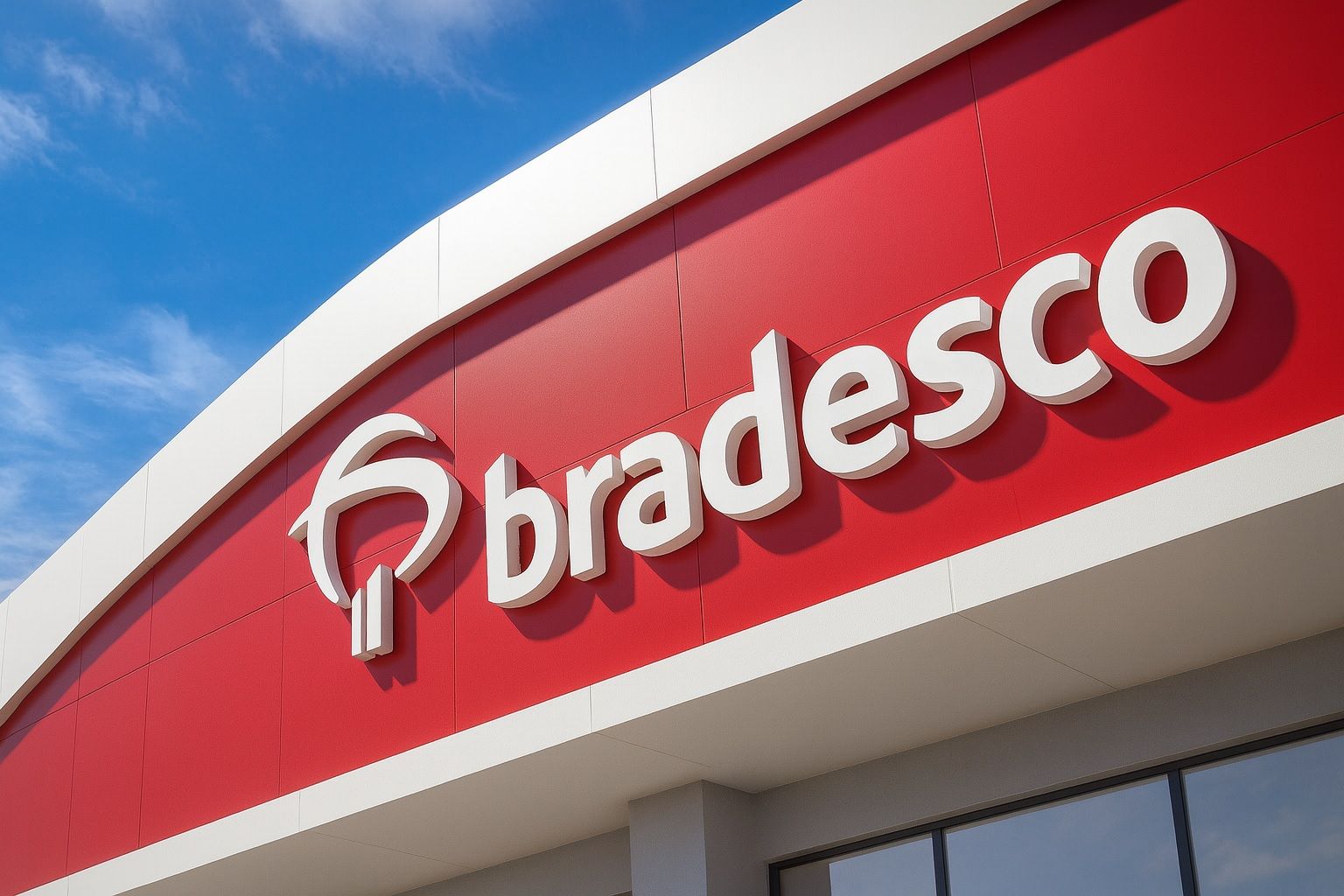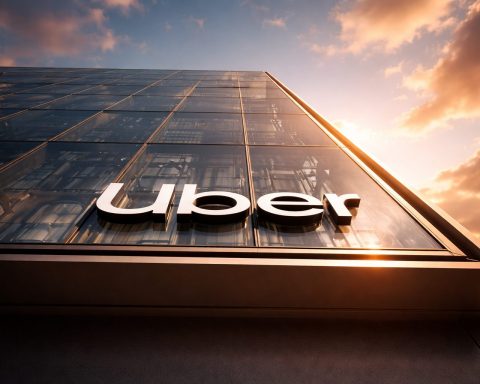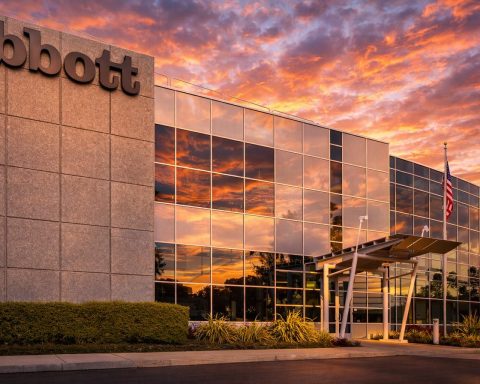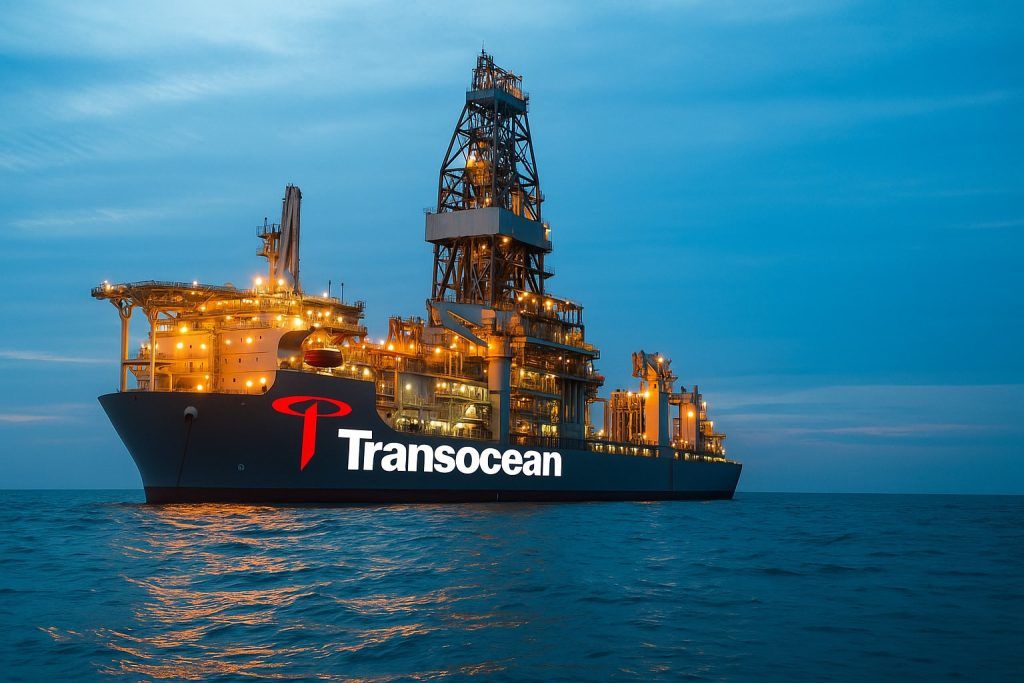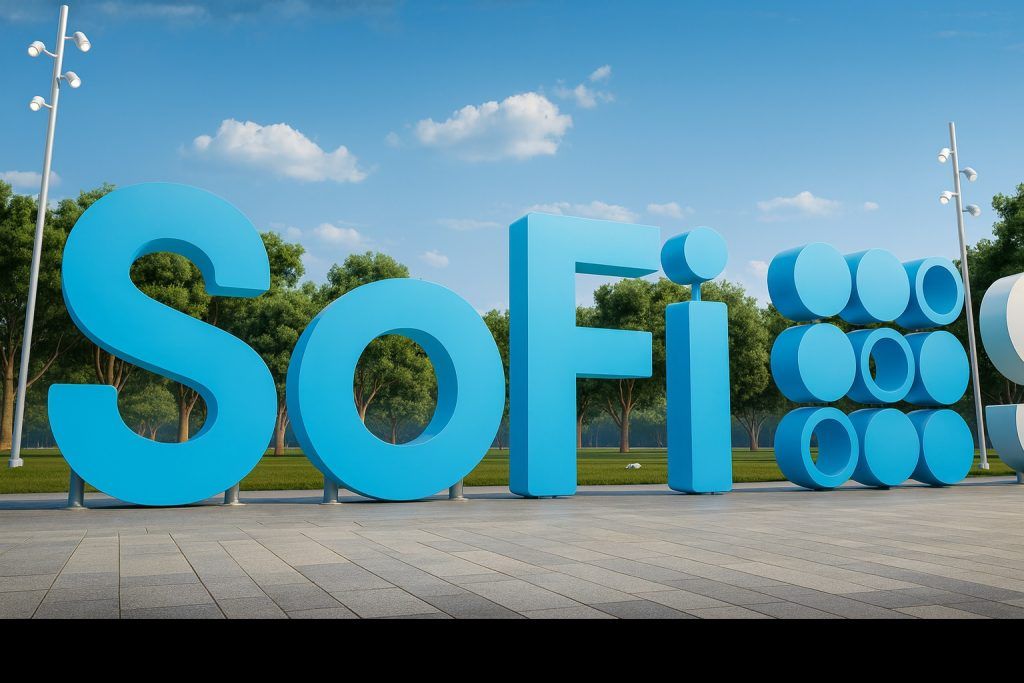- Current Price & Recent Move: Banco Bradesco’s U.S.-listed stock (NYSE: BBD) trades around $3.30, hovering near its 52-week high of $3.41 [1]. The share price has been steady this week, fluctuating within a tight range of $3.28–$3.34 [2], and climbed in 7 of the last 10 trading days (about +4% over two weeks) [3]. Year-to-date the stock is up roughly 50–60%, reflecting a strong 2025 rally [4].
- Upcoming Earnings: Bradesco is set to report Q3 2025 earnings on October 30. Analysts expect earnings of about $0.11 per share for the quarter [5], slightly above the $0.10 EPS posted in Q2. The bank’s Q2 results beat estimates (EPS of $0.107 vs $0.098 expected) and prompted management to raise 2025 growth guidance [6] [7]. Investors will watch whether Q3 continues the positive trend.
- Stock Metrics & Dividend: Even after this year’s surge, Bradesco’s valuation appears modest – about 9× trailing earnings (P/E) [8] – indicating the stock isn’t seen as overly expensive. The bank pays a monthly dividend, but recently cut the payout to $0.0035 per share (around 1.3% annual yield) amid a strategic adjustment [9]. The yield is low by banking standards, reflecting the focus on reinvesting earnings for growth.
- Analyst Sentiment: Market views on BBD are mixed. Several analysts have turned bullish – for example, Citigroup upgraded Bradesco to Buy this spring, citing an “encouraging outlook” for the bank’s return on equity [10]. On average, price targets hover around $3.50 (about 6% above current levels) [11]. However, some remain cautious: a consensus compiled by MarketBeat still rates BBD a Hold with an average target near $2.40 [12], implying downside. This divergence underscores differing views on whether the stock’s fundamentals justify its recent run-up.
- Broader Context – Brazil Macro & Banking: Brazil’s economic backdrop is pivotal for Bradesco. Interest rates remain at 15%, a two-decade high, as the central bank vows to keep policy tight “for a very prolonged period” until inflation nears its 3% target [13]. Inflation is about 5.2% – above goal but relatively stable [14] – and analysts see disinflation resuming in coming months [15]. High rates have boosted banks’ interest income but also raise credit risks. Meanwhile, Brazil’s stock market (Ibovespa) is trading near yearly highs, lifted by commodity giants and banks. Competition is heating up too: digital upstart NuBank now serves over 107 million Brazilians (60%+ of adults) and is growing fast despite macro headwinds [16], pressuring incumbents like Bradesco to innovate.
BBD Stock Performance: Steady Climb to Year-Highs
Banco Bradesco’s American Depositary Receipts (ADRs) have been on a steady upward trajectory through 2025. The stock currently sits around $3.30, within a few cents of its highest level in a year [17]. In the past week it barely budged – closing at $3.30 both Tuesday and Wednesday – indicating a possible consolidation after recent gains [18]. Volatility has been low: BBD’s intraday swings have been modest (about 1.5–2% daily range) [19], a sign of a balanced market ahead of earnings.
This calm follows an impressive rally earlier in the year. Bradesco’s ADR has doubled from its 52-week low of $1.84 [20], and delivered approximately +57% return year-to-date as of mid-2025 [21] on the back of improving financial results. That outperformance made it one of the strongest bank stocks in 2025 [22]. The climb was fueled by robust earnings growth and renewed investor optimism toward Brazilian banks. Shares of Bradesco’s peers – such as Itaú Unibanco – have also risen, reflecting broader confidence in the sector as Brazil’s economy stabilizes. Bradesco’s market capitalization now stands around $35 billion [23], and at ~9 times earnings the valuation still appears relatively cheap for a major emerging-market bank [24].
However, after such a run, questions loom: can Bradesco stock break out even higher, or is it peaking? The upcoming earnings report and economic signals will be key in determining the next leg. For now, the stock’s momentum has cooled just below its peak – a possible inflection point as investors digest gains and await new catalysts.
Financials Improve – Earnings Beat and Guidance Upgrade
Banco Bradesco’s financial performance in 2025 has largely exceeded expectations, underpinning the stock’s strength. In late July, the bank announced second-quarter 2025 earnings that beat analyst estimates. Earnings per share came in at $0.107 (vs. ~$0.098 expected) and revenue hit $5.87 billion (topping the $5.62B consensus) [25] [26]. This solid result marked the second straight quarter of robust growth – in Q1, Bradesco’s recurring net income had jumped 39% year-on-year in local currency [27]. Rising interest income (thanks to high rates) and healthy loan demand helped drive the profit gains.
Crucially, Bradesco’s management struck an optimistic tone: alongside Q2 results, the bank upgraded its 2025 guidance. Executives forecast a larger loan portfolio and higher net interest income ahead, and raised growth targets for key segments. For instance, fee and commission income growth was revised up from a 4–8% range to 5–9% for the year [28]. Income from insurance and pension operations was similarly projected to expand 9–13%, up from 6–10% prior [29]. These guidance tweaks underscore management’s confidence in Bradesco’s trajectory – they’re essentially saying the bank is performing better than originally budgeted. In the competitive Brazilian market, expanding revenue streams (loans, fees, insurance) is a positive sign of both customer demand and effective cross-selling.
Looking ahead, all eyes turn to Q3 2025 earnings, due on October 30. The consensus expectation is around $0.11 EPS with roughly $34.7 billion in quarterly revenue (in Brazilian real terms, as reported) [30]. If Bradesco meets or beats that figure – and maintains upbeat guidance – it could further validate the stock’s rally. Notably, the bank’s profitability metrics have been solid: return on equity was about 13% last quarter [31], and net interest margins have likely benefited from the 15% benchmark interest rate. Investors will also watch asset quality (loan default rates) amid high borrowing costs, and any commentary on consumer or corporate credit demand. Given the improved economic landscape, expectations are that Bradesco will show steady earnings and perhaps a cautiously optimistic outlook for 2026. Any surprises (good or bad) could sway the stock significantly from its current plateau.
Dividend Cut Signals Caution on Payouts
One notable development for shareholders has been Bradesco’s approach to dividends. In an effort to strengthen its capital and reinvest in growth, Banco Bradesco trimmed its dividend payouts in recent months. Historically, Bradesco paid small monthly dividends (a common practice among Brazilian banks). Recently, however, the bank declared a monthly dividend of $0.0035 per share for the upcoming payout on Dec 8 [32] – a token amount that annualizes to roughly $0.042 per ADR. That represents a dividend yield of only ~1.3% at the current stock price [33]. By comparison, some global bank stocks yield 3–5% or more. Bradesco’s management also indicated this lower distribution is part of a prudent strategy given the bank’s earnings and capital needs. In fact, Bradesco’s dividend payout ratio is under 10% [34], suggesting most of its profits are being retained rather than paid out.
For income-focused investors, the cut was a disappointment – the bank’s dividend was higher earlier (for example, an October dividend of $0.0036, and occasional special payouts) [35]. But for the company’s long-term health, retaining earnings can bolster equity and fund lending growth, especially important with stringent capital requirements. It’s also a hint that Bradesco is prioritizing expansion and resilience over short-term yield. Notably, the dividend decision came amid the improved earnings; rather than boost the payout, the bank chose to keep more cash on the balance sheet. This conservative stance may reflect lingering uncertainties (e.g. Brazil’s election cycle or global market volatility) that warrant extra buffers.
Going forward, investors shouldn’t expect a big income stream from BBD – the stock’s appeal is more about capital appreciation and exposure to Brazil’s banking growth. That said, Bradesco has a history of occasional bonus dividends in better times, so if profits continue to climb and the economic outlook brightens, the bank could always adjust its payout policy. For now, the 1.3% yield is essentially a token, and management’s focus is clearly on shoring up fundamentals. This aligns with many Brazilian banks taking a cautious approach given regulatory oversight and past crises – a lesson that being well-capitalized is crucial when operating in an emerging market environment.
Analysts Split: Bulls See Upside, Bears Urge Caution
Wall Street’s take on Bradesco is divided. On one hand, several analysts and investors have grown bullish on the bank this year as its turnaround gains momentum. In late May, Citigroup upgraded BBD to a “Buy”, applauding the improving outlook. Citi’s analysts specifically cited an “encouraging outlook for the company’s ROE in the short and mid-term” and expected an uptick in Bradesco’s risk-adjusted revenues [36]. Earlier in 2025, HSBC also raised its rating from Hold to Buy, noting Bradesco’s low valuation made it an attractive entry point [37]. The stock’s surge – yet still single-digit price – landed it on some “undervalued stocks” lists. Zacks Investment Research likewise highlighted Bradesco as a Top Dividend Stock (despite the tiny yield) and upgraded its rank to Buy during the summer, reflecting optimism about earnings momentum.
Current price targets reflect this guarded optimism. According to Investing.com data, the average 12-month target price is around $3.50 [38], only mildly above where BBD trades now. That suggests analysts see some upside, but perhaps not dramatic gains from here. In fact, $3.50 would be a new high, but just +6% higher. Notably, the consensus rating among those analysts is listed as “Buy” overall [39], indicating more buy ratings than holds or sells. The bullish camp argues that Bradesco’s fundamentals – rising profits, improving efficiency, and Brazil’s recovering economy – justify a re-rating of the stock higher, especially since it still trades at a P/E well below 10 [40]. In their view, BBD could continue to outperform if the bank delivers on earnings and if Brazil’s financial market conditions remain favorable.
However, there is also a camp of skeptics. Some observers caution that Bradesco’s rally might have run ahead of itself. MarketBeat’s compilation of analyst opinions, for example, shows a more tepid stance: 3 Buys, 2 Holds, 1 Sell – amounting to an overall “Hold” rating with a $2.40 average price target [41]. That $2.40 target (about 27% below the current price) suggests certain analysts anticipate a potential pullback or see limited fundamental value above $3. The disparity between this and the more bullish targets likely comes down to different assessments of risk and Brazil’s macro outlook. Weiss Ratings recently reiterated a Hold (C+) on Bradesco [42], indicating a middling score – not bad, but not a strong buy either. These cautious views may point to concerns like: credit risks if interest rates stay high too long, political uncertainty in Brazil (which we discuss below), or competition eating into market share. Essentially, the bears aren’t convinced Bradesco deserves a premium valuation yet.
Perhaps the most colorful skeptical take came from CNBC’s market commentator Jim Cramer. In August, Cramer bluntly stated on Mad Money that “I don’t want to be connected with Brazil” when asked about Banco Bradesco [43]. He noted the stock had “a big run” already and instead suggested an overseas bank like Spain’s Santander might be a safer bet [44]. “I really want to be connected with Spain,” Cramer quipped, underscoring his wariness of Brazilian market risk. While one TV personality’s opinion, this highlights a sentiment that macroeconomic and political risks in Brazil still give some investors pause (where they might favor more stable markets). In short, Bradesco is a bit of a Rorschach test: bulls see an undervalued big bank riding Brazil’s rebound, while bears point to lingering risks and say the easy gains have been made.
Macro Influences: Rates, Elections and Economic Winds
Bradesco does not operate in a vacuum – the broader Brazilian economy and policy climate heavily influence its fortunes. Right now, a mix of supportive and challenging factors are in play:
Interest Rates: Brazil’s benchmark interest rate stands at a lofty 15%, the highest level in almost 20 years. The Central Bank has kept rates unchanged since mid-2024 in a bid to tame inflation, and officials signaled they intend to hold at 15% “for a very prolonged period” until inflation decisively converges to target [45]. For banks like Bradesco, such high rates are a double-edged sword. On one hand, net interest margins (the spread banks earn on loans vs. deposits) are very healthy – Bradesco can earn strong interest income on loans. Indeed, Bradesco’s interest revenues have surged with each rate hike, bolstering profits. On the other hand, borrowing costs for consumers and businesses are steep, which can dampen credit growth and increase default risks on loans. So far, credit demand in Brazil has held up better than some expected (helped by low unemployment and government lending programs), but loan delinquencies bear watching. High rates also pressure the overall economy’s growth, which in turn influences banking activity.
Inflation and Economy: Inflation in Brazil, while down from peaks, is still above the Central Bank’s 3% goal. The latest data for September showed consumer prices up 5.17% year-over-year [46]. The slight uptick from the previous month’s 5.13% suggests inflation is plateauing at a moderate level. Encouragingly, core inflation has been easing and food prices have been falling for months [47]. Analysts generally describe Brazil’s inflation picture as “benign,” noting that the recent rebound was mild and largely due to base effects [48]. Pantheon Macroeconomics’ chief Latin America economist Andres Abadia said “the overall picture remains benign… forward-looking indicators point to continued disinflation in the months ahead” [49]. If inflation indeed continues to drift lower, it could pave the way for rate cuts sometime in 2026, which would be a double positive for banks – stimulating loan demand and likely boosting bond valuations. In terms of growth, Brazil’s economy has been surprisingly resilient. After expanding ~3% in 2024, GDP is on track for around 2% growth in 2025 (the Central Bank’s latest projection) – a moderate pace, but not a recession [50]. A stronger economy means more business for banks (loans, fees, etc.), so Bradesco benefits from this stability.
Political & Fiscal Climate: A looming factor is Brazil’s general election in 2026. President Luiz Inácio “Lula” da Silva will be up for re-election, and historically Brazilian elections can bring turbulence to markets. There’s speculation that the government could pursue demand-boosting fiscal measures or extra public spending as the election nears [51], which in turn might stoke inflation or debt concerns. Central Bank officials have openly cited “uncertainty linked to next year’s elections” as a risk factor [52]. They also note that inflation expectations among economists have remained above target partly due to fiscal concerns [53]. For banks, irresponsible fiscal policy could hurt investor sentiment or lead to higher future interest rates – not ideal. On the flip side, if a stable fiscal path is maintained, confidence in Brazil could rise. Lula’s administration has so far adhered to a new fiscal framework to control debt, and foreign investors have cautiously returned to Brazilian markets (mid-October saw a brief net inflow to equities [54]). Bradesco, as one of Brazil’s largest lenders, is also sensitive to any regulatory changes or taxes on banks. In this regard, nothing major has hit in 2025, but investors remain watchful of populist policies (in the past, banks faced pressure on fees and lending rates by government mandates).
Competitive Landscape: The Brazilian banking sector is dominated by a few giants – Bradesco, Itaú, Banco do Brasil, and Santander Brasil – which historically enjoyed wide moats. But the landscape is evolving with fintech and digital banks rising. The poster child is Nu Holdings (Nubank), a digital bank that has amassed over 122 million customers across Latin America, including 107 million in Brazil [55]. That figure is staggering – it means Nubank serves over 60% of Brazilian adults [56] with at least some financial product. Nubank’s growth (adding ~4 million new customers in Q2 alone) [57] shows that many Brazilians are embracing online banking and credit cards outside the traditional banks. This trend pushes Bradesco to innovate its digital offerings (the bank has invested in its mobile app and fintech partnerships) to retain younger clients. While Bradesco still has a huge branch network and a trusted brand, the competitive pressure on fees and lending rates will likely increase. In the long run, competition tends to benefit customers but can squeeze margins for incumbents. For now, Bradesco’s vast resources and diverse services (it has large insurance and asset management arms) give it a strong footing – but it can’t be complacent.
In summary, macroeconomic and sector forces are a mixed bag for Bradesco. High interest rates and a solid economy work in its favor today, but those same high rates must eventually normalize. Political/fiscal unknowns are a cloud on the horizon, though not an immediate storm. And the bank must continue adapting to technological disruption at home. Investors in BBD will need to keep one eye on Brasília (for policy signals) and one eye on the global scene – e.g. U.S. interest rate trends or commodity swings – as these external factors often trickle into emerging market stocks. Bradesco’s management has navigated many cycles in its 80+ year history; how well it manages the current climate will heavily influence whether the stock’s recent strength is sustained.
Conclusion: Outlook for Banco Bradesco Stock
Banco Bradesco’s stock has enjoyed a remarkable run in 2025, nearly doubling off its lows and catching the attention of global investors. The bank’s improving earnings, conservative balance sheet, and Brazil’s relative economic stability have all contributed to renewed confidence. Trading near its 52-week high, BBD has momentum – but also high expectations to meet. The upcoming earnings report and guidance will be pivotal in determining if the rally has more fuel. If Bradesco can show continued profit growth and asset quality control, it may justify the bullish calls for further upside. Moreover, any hint that Brazil’s central bank could start easing interest rates in 2026 (on the back of falling inflation) would likely be a catalyst for bank stocks, Bradesco included, by spurring loan growth and reducing funding costs.
That said, investors should be mindful of risks. The stock is no longer the bargain it was at $2 – at ~$3.30 it reflects a lot of good news. Any disappointment in earnings or a macro shock (for example, a resurgence of inflation or political instability heading into election season) could trigger a pullback. The divide in analyst opinions underscores this balance: there’s optimism, but also a contingent urging caution. Bradesco’s relatively low valuation and strong franchise argue for patience and potential long-term reward, yet as Jim Cramer’s comments highlight, some remain wary of Brazil’s unpredictability [58].
For those bullish on Brazil’s banking sector, Bradesco offers a compelling blue-chip exposure – it’s a well-capitalized, profitable bank with a large customer base and multiple income streams (banking, insurance, asset management). Its stock provides a play on Brazil’s economy with the convenience of U.S. market listing and liquidity. The near-term trajectory will likely track the narrative of whether Brazil can maintain economic momentum under high rates and whether corporate earnings (including banks’) continue to beat expectations. Bradesco has navigated challenging periods before and emerged stronger, and 2025 seems to be a year of regaining footing.
In conclusion, Banco Bradesco’s stock rally has been underpinned by real improvements, but the road ahead isn’t without bumps. Investors should watch the upcoming earnings on Oct. 30 for clues – and keep an eye on Brasilia and São Paulo for any policy or market shifts. For now, BBD sits at a crossroads of opportunity and caution: near a peak, yet potentially poised for another leg up if the stars align in Brazil’s economy. Whether this banking giant can break out or pulls back will hinge on executing its growth plans and the ever-important macro climate in the months to come. As always, in emerging markets, expect the unexpected – but Bradesco has shown it’s up to the challenge so far this year.
Sources:
- Reuters – Brazil CenBank policy outlook and economic context [59] [60] [61]
- MarketBeat – Bradesco earnings schedule and analyst estimates [62] [63]
- Insider Monkey via FinViz – Analyst upgrades/downgrades and year-to-date performance [64] [65] [66]
- MarketBeat – Institutional holdings & dividend info [67] [68]
- Investing.com – Current price, range, and analyst target consensus [69] [70]
- StockInvest.us – Recent stock movement and technical trend [71]
- CNBC/Insider Monkey – Jim Cramer’s opinion on Bradesco vs. peers [72]
- TS2.tech (TechStock²) – Brazilian banking sector news (Nubank growth amid headwinds) [73]
References
1. www.investing.com, 2. www.investing.com, 3. stockinvest.us, 4. finviz.com, 5. www.marketbeat.com, 6. finviz.com, 7. finviz.com, 8. www.marketbeat.com, 9. www.marketbeat.com, 10. finviz.com, 11. www.investing.com, 12. www.marketbeat.com, 13. www.reuters.com, 14. www.reuters.com, 15. www.reuters.com, 16. ts2.tech, 17. www.investing.com, 18. www.investing.com, 19. stockinvest.us, 20. www.marketbeat.com, 21. finviz.com, 22. finviz.com, 23. www.marketbeat.com, 24. www.marketbeat.com, 25. finviz.com, 26. finviz.com, 27. finviz.com, 28. finviz.com, 29. finviz.com, 30. www.marketbeat.com, 31. www.marketbeat.com, 32. www.marketbeat.com, 33. www.marketbeat.com, 34. www.marketbeat.com, 35. stockinvest.us, 36. finviz.com, 37. finviz.com, 38. www.investing.com, 39. www.investing.com, 40. www.marketbeat.com, 41. www.marketbeat.com, 42. www.marketbeat.com, 43. www.insidermonkey.com, 44. www.insidermonkey.com, 45. www.reuters.com, 46. www.reuters.com, 47. www.reuters.com, 48. www.reuters.com, 49. www.reuters.com, 50. finance.yahoo.com, 51. www.reuters.com, 52. www.reuters.com, 53. www.reuters.com, 54. www.riotimesonline.com, 55. ts2.tech, 56. ts2.tech, 57. ts2.tech, 58. www.insidermonkey.com, 59. www.reuters.com, 60. www.reuters.com, 61. www.reuters.com, 62. www.marketbeat.com, 63. www.marketbeat.com, 64. finviz.com, 65. finviz.com, 66. finviz.com, 67. www.marketbeat.com, 68. www.marketbeat.com, 69. www.investing.com, 70. www.investing.com, 71. stockinvest.us, 72. www.insidermonkey.com, 73. ts2.tech
